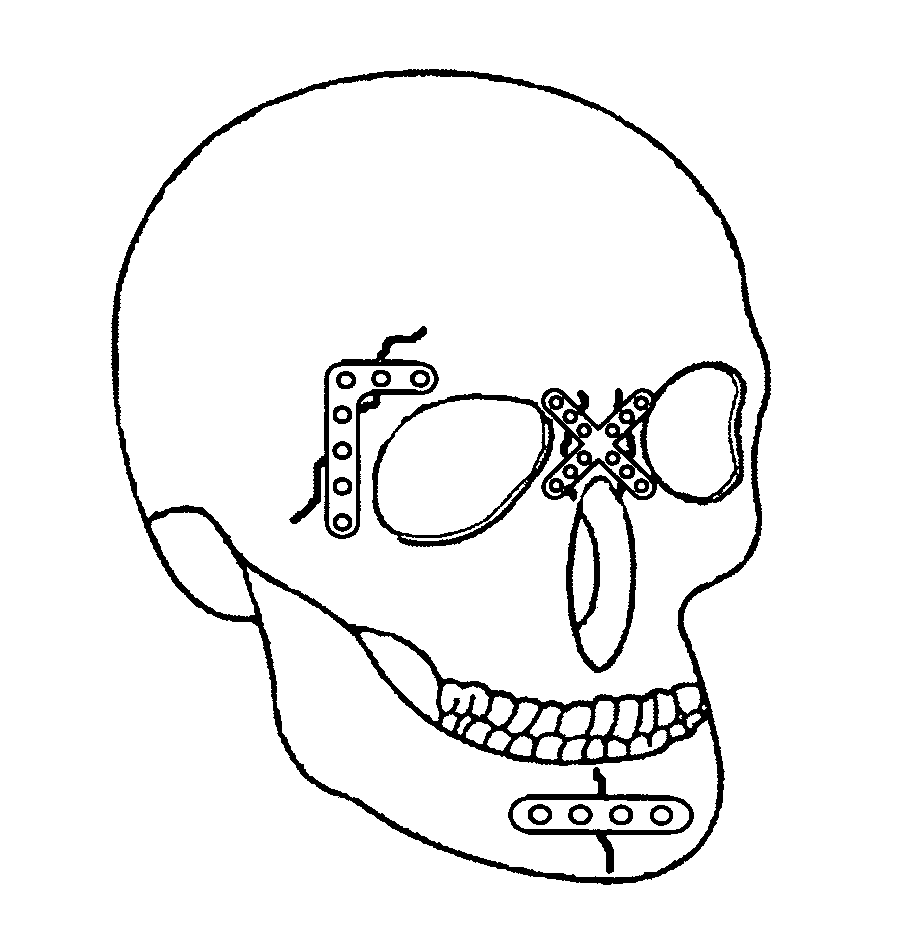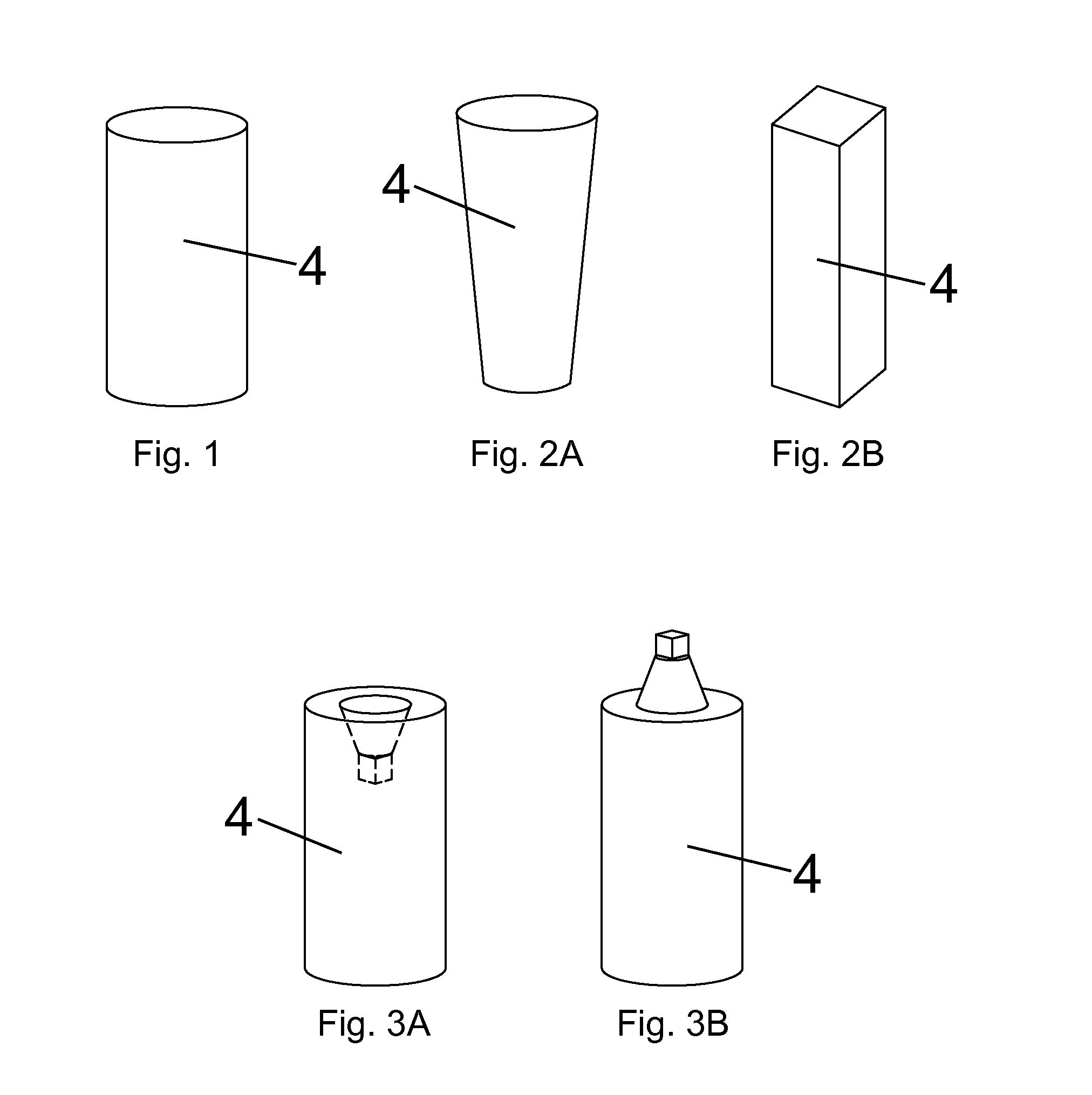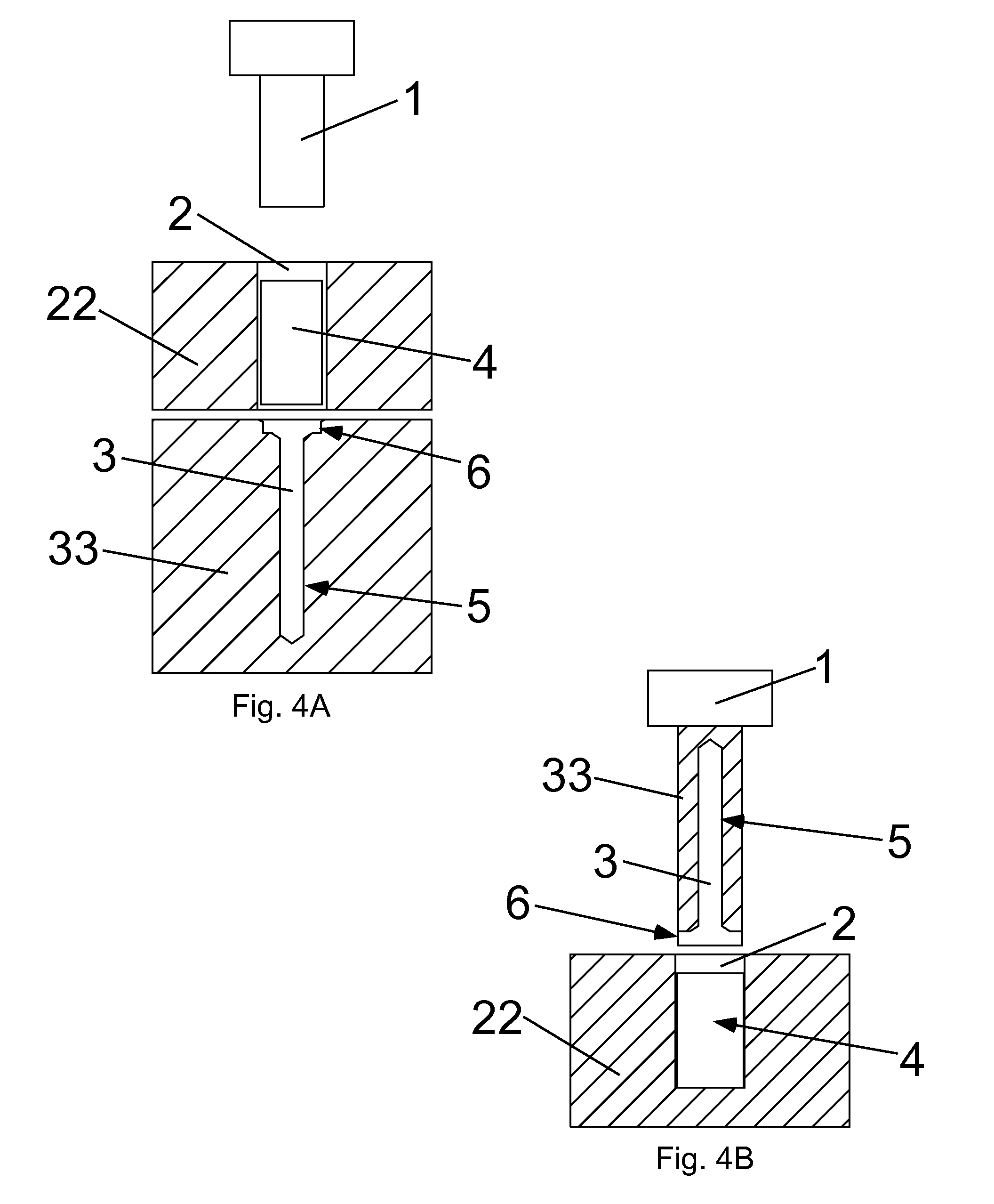Oriented polymer implantable device and process for making same
a polymer implantable device and polymer technology, applied in the field of medical implant devices, can solve the problems of increased degradation mass, adverse biological reactions, and need for another operation, and achieve the effects of increasing mechanical properties, dimensional stability, and sufficient strength
- Summary
- Abstract
- Description
- Claims
- Application Information
AI Technical Summary
Benefits of technology
Problems solved by technology
Method used
Image
Examples
example 1
[0098]Rectangular slugs were fabricated by injection molding 85 / 15 poly(L-lactide-co-glycolide). The slugs were placed into a tooling arrangement heated to 96° C. and the polymer heated to a temperature above the Tg of the polymer but below the Tm of the polymer. A ram press was used to apply pressure to the slug and force the material into the die, the die having a smaller cross-section than the slug. A draw ratio of approximately 4:1 was used. The die geometry was such that it formed a straight plate approximately 50×7×2.5 mm (L×W×T). The slug and die were cooled to a temperature sufficient to allow removal of the pressed part. The parts were evaluated to determine their bending ability in hot water (65° C.). Previous trials with high-strength oriented polymer devices made by prior art continuous processes indicated that the material was highly unstable dimensionally when heated above its glass-transition to allow it to be bent. The high-strength, oriented plate of this example wa...
example 2
[0099]Rectangular slugs were fabricated by injection molding 85 / 15 poly(L-lactide-co-glycolide). The slugs were placed into a tooling arrangement heated to 110° C. and the polymer heated to a temperature above the Tg of the polymer but below the Tm of the polymer. A ram press was used to apply pressure to the slug and force the material into the die, the die having a smaller cross-section than the slug. A draw ratio of approximately 4:1 was used. The die geometry was such that it caused the material to curve at an angle creating a bent-axis L-plate. The slug and die were cooled to a temperature sufficient to allow removal of the pressed part. The parts were evaluated to determine their bending ability and L-plate geometry retention in hot water (65° C.). This temperature is well in excess of the polymer's Tg. The high-strength, oriented L-plate was found to be much easier to bend when heated and it was found that the material maintained its thickness and length, as well as its L-sha...
example 3
[0100]Circular slugs were fabricated by extruding poly(L-lactide) rod and then cutting the rod to length using standard machining techniques. The slugs were placed into a tooling arrangement heated to 159° C. and the polymer heated to a temperature above the Tg of the polymer but below the Tm of the polymer. A ram press was used to apply pressure to the slug and force the material into the die, the die having a smaller cross-section than the slug. A draw ratio of approximately 4:1 was used. The die geometry was such that it formed a pin approximately 3.5×40 mm (Diameter x Length). The slug and die were cooled to a temperature sufficient to allow removal of the pressed part. The parts were evaluated to determine their dimensional and strength stability after heating in hot water (70 ° C.). This temperature is well in excess of the polymer's Tg. The parts were measured before and after immersion in hot water for 1 hour. An ANOVA analysis was performed and it was determined that there ...
PUM
| Property | Measurement | Unit |
|---|---|---|
| temperature | aaaaa | aaaaa |
| temperature | aaaaa | aaaaa |
| temperature | aaaaa | aaaaa |
Abstract
Description
Claims
Application Information
 Login to View More
Login to View More - R&D
- Intellectual Property
- Life Sciences
- Materials
- Tech Scout
- Unparalleled Data Quality
- Higher Quality Content
- 60% Fewer Hallucinations
Browse by: Latest US Patents, China's latest patents, Technical Efficacy Thesaurus, Application Domain, Technology Topic, Popular Technical Reports.
© 2025 PatSnap. All rights reserved.Legal|Privacy policy|Modern Slavery Act Transparency Statement|Sitemap|About US| Contact US: help@patsnap.com



